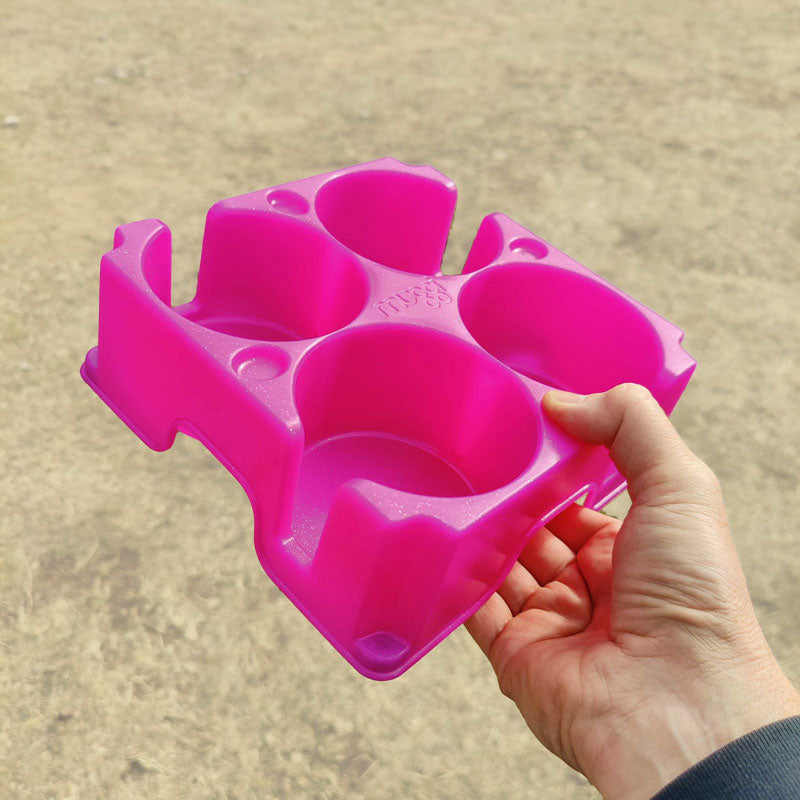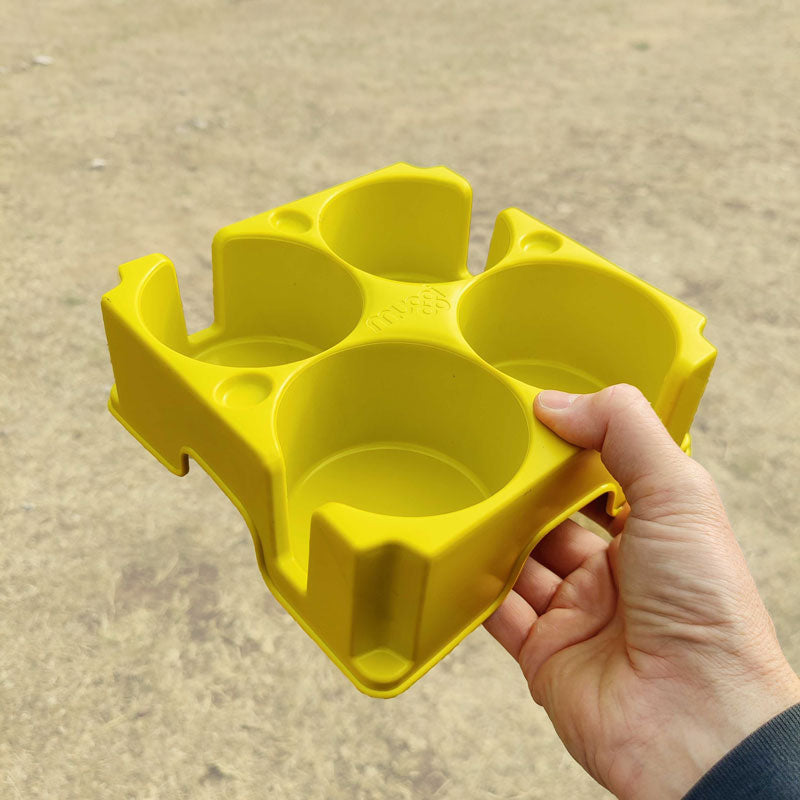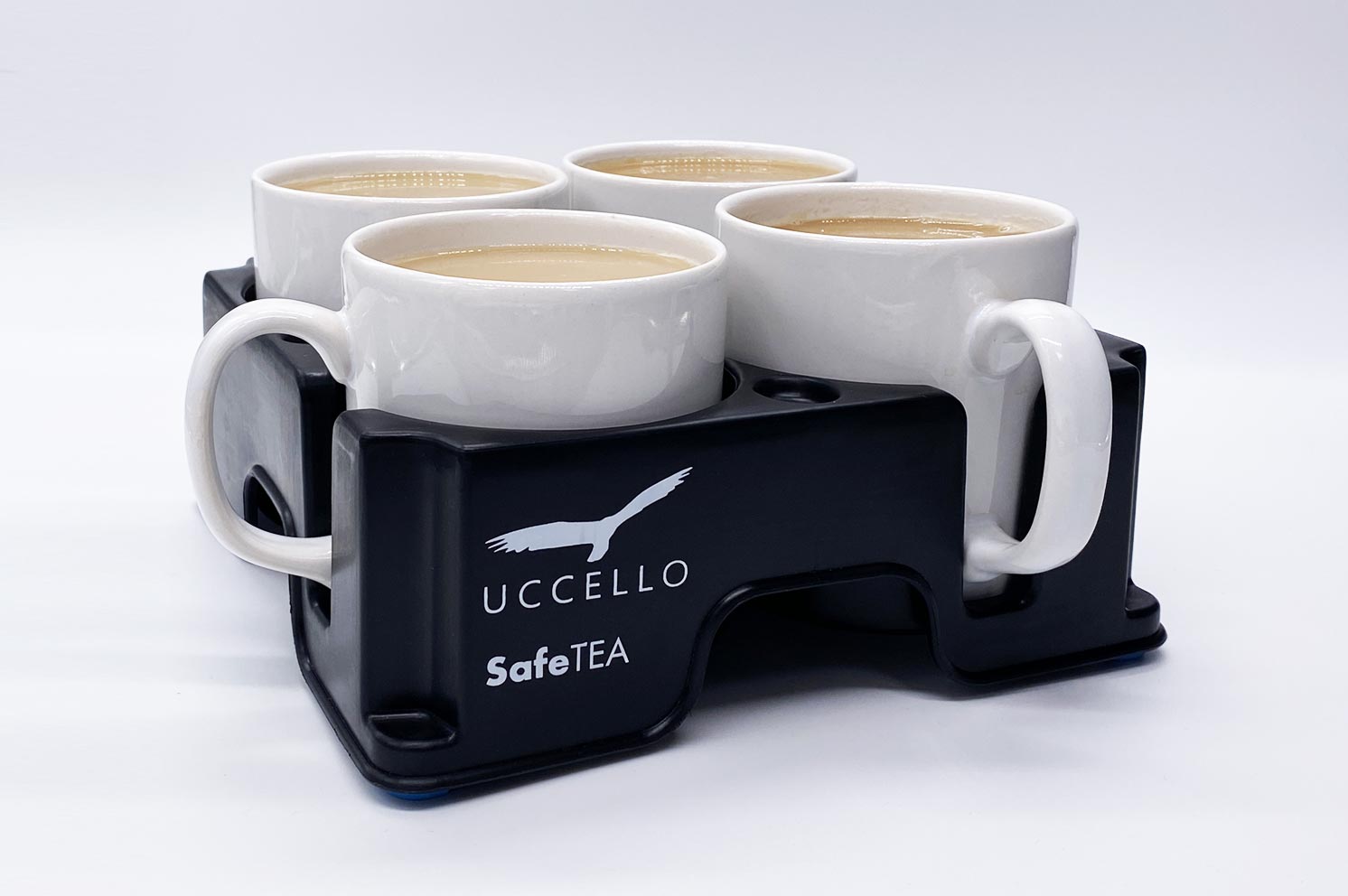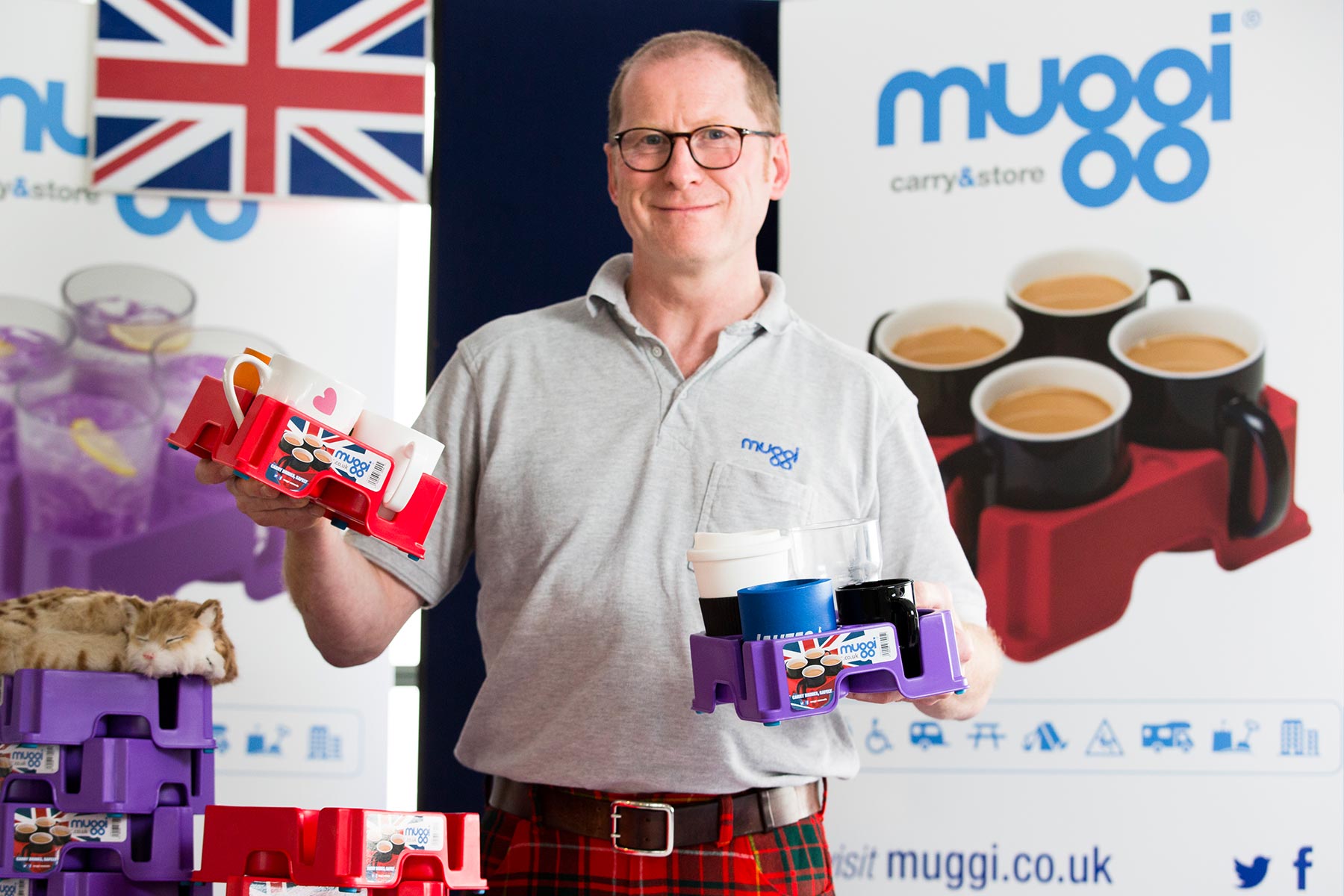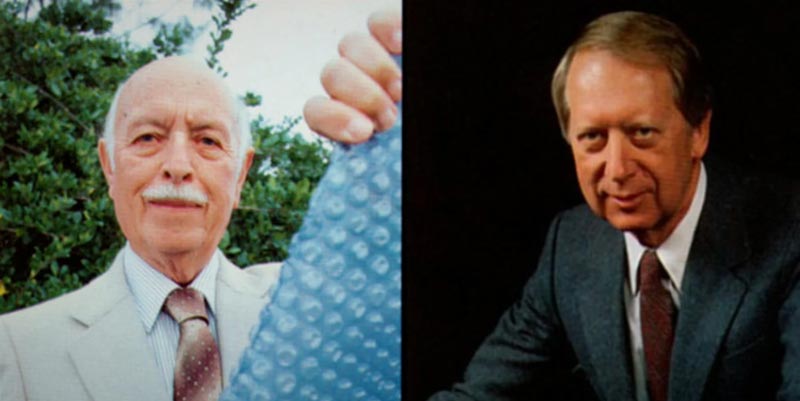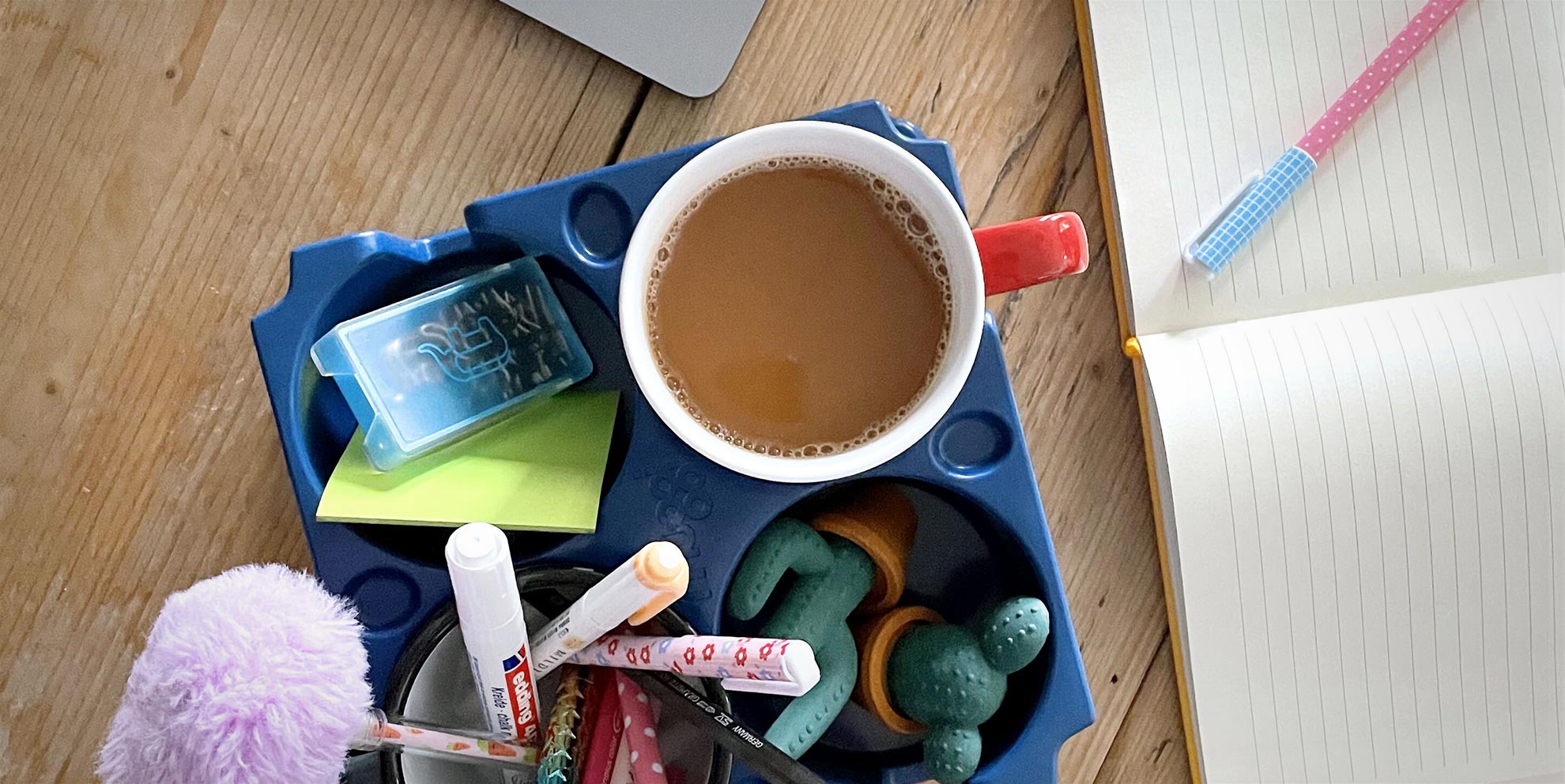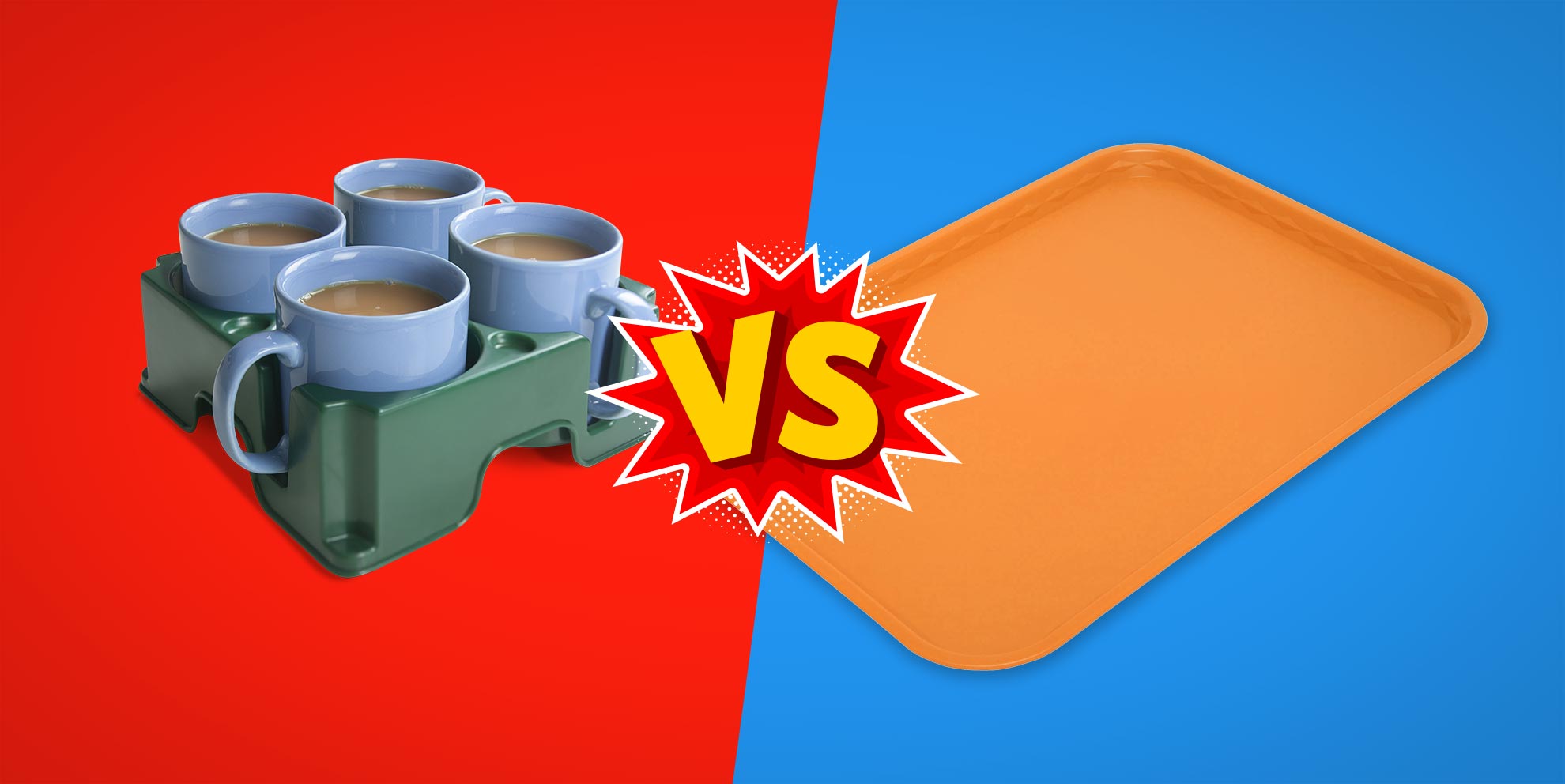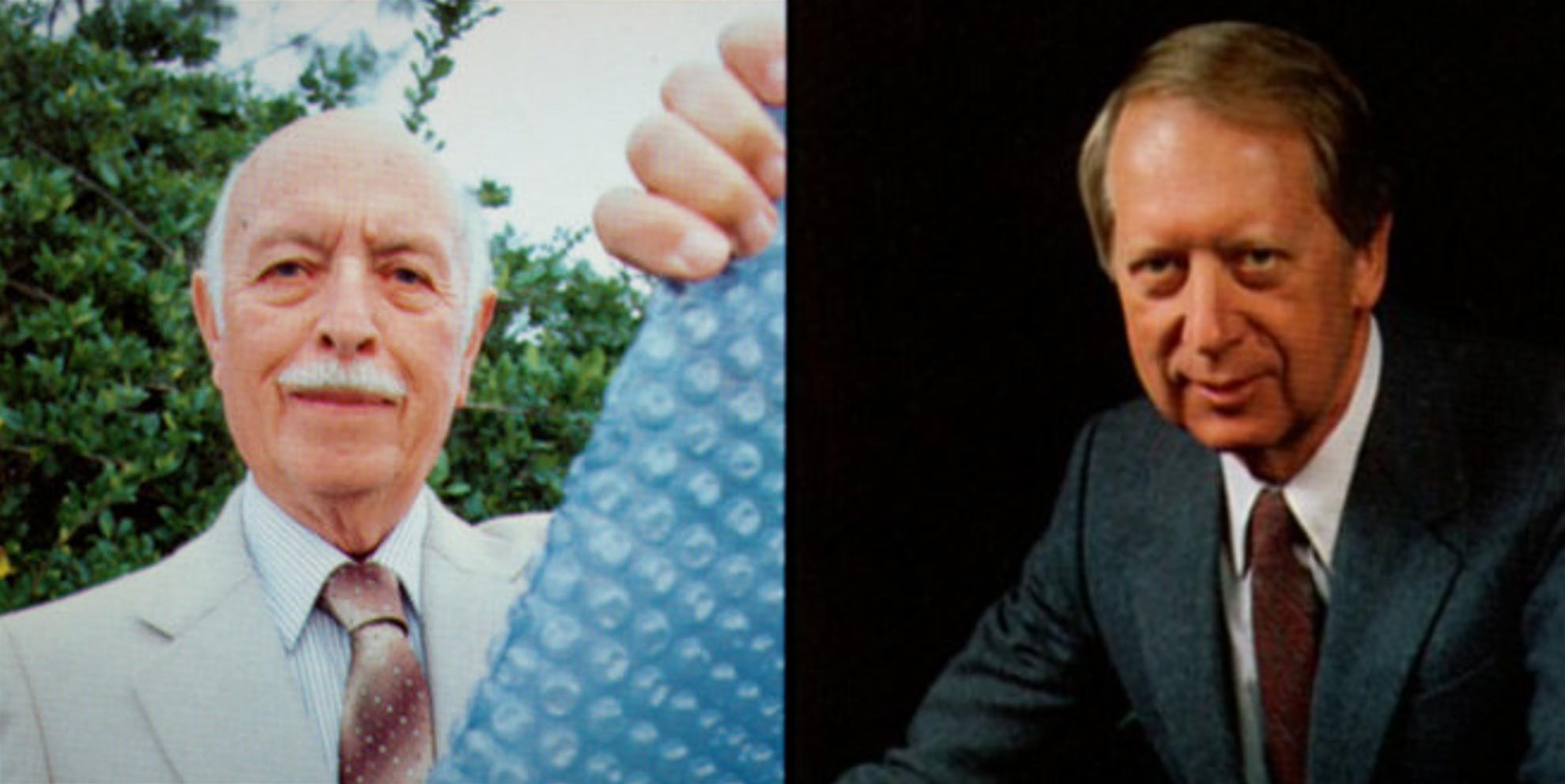
Serendipity By Design
Think of all the wonderful inventions in the modern era that were designed for one thing and ended up being famous for another. Can't think of any? Well, let me help...
Bubble Wrap was originally invented in 1957 by engineer Alfred Fielding and Swiss inventor Marc Chavannes as a textured wallpaper. The two plucky fellows stuck two shower curtains together and trapped air pockets in order to create the effect. Unfortunately, for them, interior design tastes of the day weren't ready for such a radical look and their bubble was duly burst.
It wasn't until three years later that Frederick W. Bowers, a marketer at Sealed Air, perfected the process and found a willing buyer in IBM to package up their new 1401 variable word length computer. Today, around 10% of Sealed Air's $4 billion revenue is attributed to Bubble Wrap.
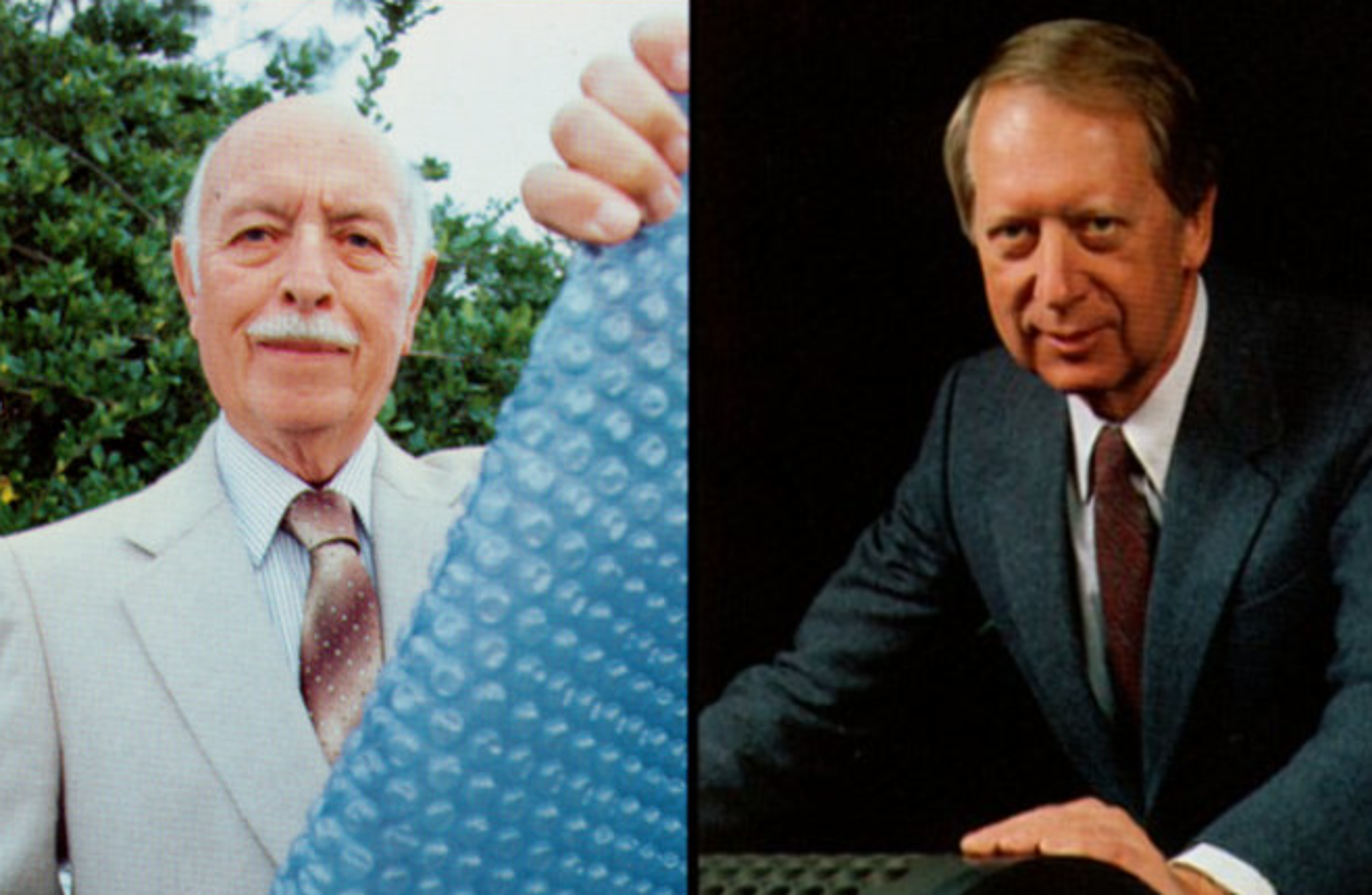
Marc Chavannes, left, and Alfred Fielding - co-inventors of Bubble Wrap - gave the world something amazing with a sensational failed idea. Image courtesy of Sealed Air Corp.
Also, did you know that in 1871 William Russell Frisbie bought a bakery in Bridgeport, Connecticut which he called the Frisbie Pie Company. After his death the company continued to grow in popularity and ended up earning a decent crust. In 1956 it reached a peak production of 80,000 pies a day. The pies and cookies were made on plate-shaped tins bearing the company name.
Students at nearby Yale took to throwing the empty tins to each other, yelling "Frisbie!" as they let go starting a pie-fuelled craze that, unbeknown to them, would take the world by storm. Then, in 1948, Walter Frederick Morrison and his partner Warren Franscioni invented a plastic version of the disc called the Flying Saucer. Morrison later improved the design and in 1955, after splitting from Franscioni, and sold their invention to the toy company Wham-O.
In 1958, Wham-O changed it's name to the Frisbee disc to avoid any trademark infringements with the original pie company. By 1977, over 100 million Frisbee discs had flown off the shelves. Quite a tasty story.
Marty McFly in Back To The Future III claiming his fictional right to inventing the game of Frisbee.
Whether products or services meet their target functional requirements straight away - as they were designed - or find wonderfully serendipitous paths to success is neither here nor there. The common denominator tends to be the fact someone not only conceived the original thought but had the creative impulse to articulate it, document it, sketch it out and even manufacture it.
This is a perfect manifestation of Design Thinking, the process of empathising, defining, ideating, prototyping and testing. Arguably, without all these phases, you aren't likely to make an idea materialise.
“Design thinking begins with skills designers have learned over many decades in their quest to match human needs with available technical resources within the practical constraints of business. By integrating what is desirable from a human point of view with what is technologically feasible and economically viable, designers have been able to create the products we enjoy today."
Tim Brown
For a product like muggi, there's a similar thread in terms of design coming from a tangible human need - the need to hold and secure mugs in a boat's kitchen sink whilst at sea - was the brief. In addition to that, the need to carrying the mugs securely and easily quickly became a secondary need. A perfect example of defining and ideating through human need.
Fundamentally though, since the original conception of muggi, its core function of storing and carrying mugs was only the beginning of its impact on those people it came into contact with. Very much an accidental and cosmic meeting of earth energies was the impact it has on those with mobility and dexterity challenges; from being in wheelchairs and mobility aids to suffering from arthritis, Parkinson's and Cerebral Palsy.
muggi isn't the silver bullet for all assisted living needs but it has gone a long way to profoundly changing people's lives for the better. For many, a greater sense of independence, freedom, contribution and confidence - a very rewarding and meaningful by-product of the original brief.
A UK-made recyclable mug holder made from waste marine and land plastics it may be but for us, and many happy global customers, it's an unexpected and delightful pathway along the muggi journey.


